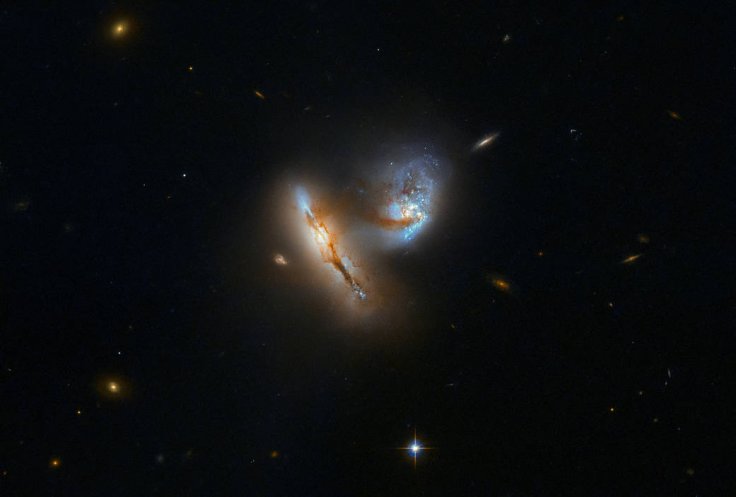
The Hubble Space Telescope has captured a mind-blowing space event featuring two galaxies. A pair of galaxies, which collectively called UGC 2369, charging towards each other and this rare event was captured by the telescope.
As per the astronomers, these two galaxies are slowly merging because of their proximity. The image showed that the pair, Northern Galaxy 2369 (UGC 2369N) and Southern Galaxy UGC 2369 (UGC 2369S) appear distorted as the merger unfolds.
In the space, the twists and contortions of the pair of galaxies are clearly visible in the Hubble image. Astronomers noted that between these two galaxies there is a massive amount of stellar gas as well as cosmic dust and both of which are abundant in regions of celestial formation and destruction.
It should be noted that in this case the Hubble telescope was operated by the European Space Agency (ESA) and not NASA, though the latter built the telescope with contributions from the former. While Space Telescope Science Institute (STScI) selects Hubble's targets and processes the data, NASA's Goddard Space Flight Center controls the spacecraft.
As per ESA, "A tenuous bridge of gas, dust, and stars can be seen connecting the two galaxies, created when they pulled out into space across the diminishing divide between them."
NASA said that such interactions between galaxies are the very common events and for larger galaxies like the Milky Way, mostly interactions involve significantly smaller dwarf galaxies. The American space agency also stated that in every few billion years, a more momentous event can occur.
"For our home galaxy, the next big event will take place in about four billion years, when it will collide with its bigger neighbour, the Andromeda galaxy. Over time, the two galaxies will likely merge into one — already nicknamed Milkomeda," it added.
As per a theory, Milky Way will collide with its nearest galactic neighbour Andromeda, also known as Messier 31, M31, or NGC 224 in the distant future that is expected to take place four billion years from now and it will be the next big event for our home galaxy.
Scientists believe that when the two galaxies will merge, it will form a new galaxy which has already been nicknamed "Milkomeda."









